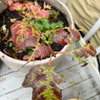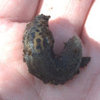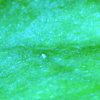Powdery Mildew -- an answer for after-the-fact!
valentinetbear
16 years ago
Related Stories

GARDENING GUIDESNew Ways to Think About All That Mulch in the Garden
Before you go making a mountain out of a mulch hill, learn the facts about what your plants and soil really want
Full Story
HOUSEKEEPINGHow to Clean a Glass Shower Door
See which tools and methods will keep those glass shower walls and doors sparkling clean
Full Story
FLOORSWill Cork Float for Your Bathroom Floor?
Get the facts on advantages, disadvantages, costs and installation to see if a cork bathroom floor is right for you
Full Story
BATHROOM DESIGNBathroom Surfaces: Ceramic Tile Pros and Cons
Learn the facts on this popular material for bathroom walls and floors, including costs and maintenance needs, before you commit
Full Story
HEALTHY HOMEWhat's the Deal With Radon?
Get the facts on testing for this cancer-causing gas — and how to make your home safe if it shows up
Full Story
WINTER GARDENINGPruning Secrets for Exquisite Roses
Encourage gorgeous blooms year after year with this time-tested advice on how to prune your rosebush in winter for health and shape
Full Story
BATHROOM WORKBOOK5 Ways With a 5-by-8-Foot Bathroom
Look to these bathroom makeovers to learn about budgets, special features, splurges, bargains and more
Full Story
CONTAINER GARDENSContainer Garden Basics: How and When to Water Potted Plants
Confused about soil moisture, the best time to water and what watering device to use? This guide can help
Full Story
REMODELING GUIDESTop 10 Tips for Choosing Shower Tile
Slip resistance, curves and even the mineral content of your water all affect which tile is best for your shower
Full Story
BATHROOM DESIGNWater Damage Spawns a Space-Saving Bathroom Remodel
A game of inches saved this small New York City bathroom from becoming too cramped and limited
Full Story









jean001
valentinetbearOriginal Author
Related Professionals
Owings Mills Landscape Architects & Landscape Designers · Dallas Landscape Contractors · Estelle Landscape Contractors · Fort Wayne Landscape Contractors · Fuquay-Varina Landscape Contractors · Lake Saint Louis Landscape Contractors · Longmont Landscape Contractors · North Plainfield Landscape Contractors · Palos Verdes Estates Landscape Contractors · Plainview Landscape Contractors · Westford Landscape Contractors · Tyngsboro Landscape Contractors · Greenfield Landscape Contractors · Winter Gardens Landscape Contractors · Palos Heights Landscape Contractorsrivers1202
Kimmsr
gardengal48 (PNW Z8/9)
rhizo_1 (North AL) zone 7
valentinetbearOriginal Author
rivers1202
vera_eastern_wa
Kimmsr
bgreen
rivers1202
calliope
botanybob
calliope
calliope
Kimmsr
valentinetbearOriginal Author
rhizo_1 (North AL) zone 7
ronalawn82